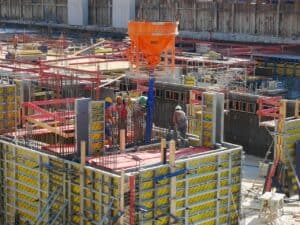Key Takeaways:
- Discover how the design-build approach fosters innovation and efficiency.
- Learn the benefits of integrating design and construction in one unified workflow.
- Explore industry insights and examples of successful design-build projects.
Table of Contents
- Introduction to Design-Build in Construction
- The Core Benefits of Design-Build Projects
- How Design-Build Promotes Innovation
- Comparing Design-Build with Traditional Methods
- Real-World Applications of Design-Build
- Overcoming Challenges with Design-Build
- Future Trends in the Design-Build Approach
- Conclusion and Final Thoughts
Introduction to Design-Build in Construction
The design-build methodology transforms how we think about construction by fusing the design and construction phases into a cohesive workflow. Doing so ensures a fluid transition from the conceptual stage to project completion. This integrated approach strongly emphasizes collaboration, prompting various stakeholders to work together towards a common goal. This synergy often leads to more streamlined processes, enhanced communication, and significant project efficiency. By breaking down traditional silos, the design-build approach fosters innovation and allows for proactive problem-solving throughout the entire project lifecycle.

The Core Benefits of Design-Build Projects
Design-build projects shine because they offer a single point of responsibility, significantly reducing the risks and complexities typically associated with construction projects. Such an arrangement promises cost efficiency and opens the door to innovative solutions, which is especially advantageous in commercial construction projects where economic considerations are often paramount. This approach allows the design and construction phases to overlap, markedly shortening project timelines as tasks can be completed concurrently rather than sequentially. In addition, consolidating roles promotes cost savings by streamlining communication channels and minimizing the likelihood of costly miscommunications between distinct contractors, which were commonplace in traditional projects.
How Design-Build Promotes Innovation
The collaborative nature of the design-build model fosters an environment ripe for innovation. Designers and builders working in tandem encourage the adoption of new technologies and methodologies that can enhance the quality and efficiency of the final product. This fusion of creativity and practical application results in solutions that might not otherwise emerge in more segmented construction processes. By having all parties actively participate from the project’s inception, there is greater flexibility to incorporate innovative ideas that leverage emerging technologies effectively.
Comparing Design-Build with Traditional Methods
Traditional construction methods, specifically the design-bid-build approach, tend to separate the various phases of a project, often leading to fragmented workflows and communication breakdowns. In contrast, the design-build method integrates the design and construction phases, which helps eliminate the potential for delays, redundancies, and cost overruns. This holistic approach aligns the project objectives, fostering a more cohesive strategy that optimizes resources and leads to efficient outcomes.
Real-World Applications of Design-Build
The design-build process has seen significant success in real-world applications, especially in large-scale infrastructure projects and multifaceted commercial developments. Such projects demand high precision and coordination, which the design-build method provides. For instance, the approach has been instrumental in ensuring that complex infrastructure projects involving numerous stakeholders and intricate planning meet stringent deadlines and budget constraints. As noted by Engineering News-Record, the evolution of design-build continues to play a pivotal role in the efficient delivery of modern infrastructure.
Overcoming Challenges with Design-Build
Despite its many benefits, the design-build method poses specific challenges that require careful navigation. Achieving success with this approach hinges on high trust, transparent communication, and clear role definitions among all stakeholders. Implementing strategies to enhance these elements is critical to overcoming potential difficulties. Maintaining an open dialogue and fostering an atmosphere of collaboration can help ensure that the design-build process proceeds smoothly, ultimately leading to successful project completion.
Future Trends in the Design-Build Approach
The future of design-build holds exciting possibilities, driven by technological advancements and evolving industry demands. Trends such as digital tool integration, prefabrication techniques, and sustainable construction practices are becoming increasingly integral to the design-build strategy. As these trends gain momentum, the design-build process is poised to continue delivering efficient, environmentally friendly projects and be responsive to ever-changing client needs. According to For Construction Pros, digital collaboration tools will further enhance these processes, creating even more innovative and effective project outcomes.
Conclusion and Final Thoughts
The design-build method significantly shifts towards more integrated, innovative building practices. By dismantling traditional silos and fostering a collaborative environment, design-build promises a future of construction projects completed efficiently, cost-effectively, and with a keen eye on quality. As the industry evolves, the design-build process will undoubtedly play a central role in guiding successful construction endeavors, making it an approach to watch in the coming years.



